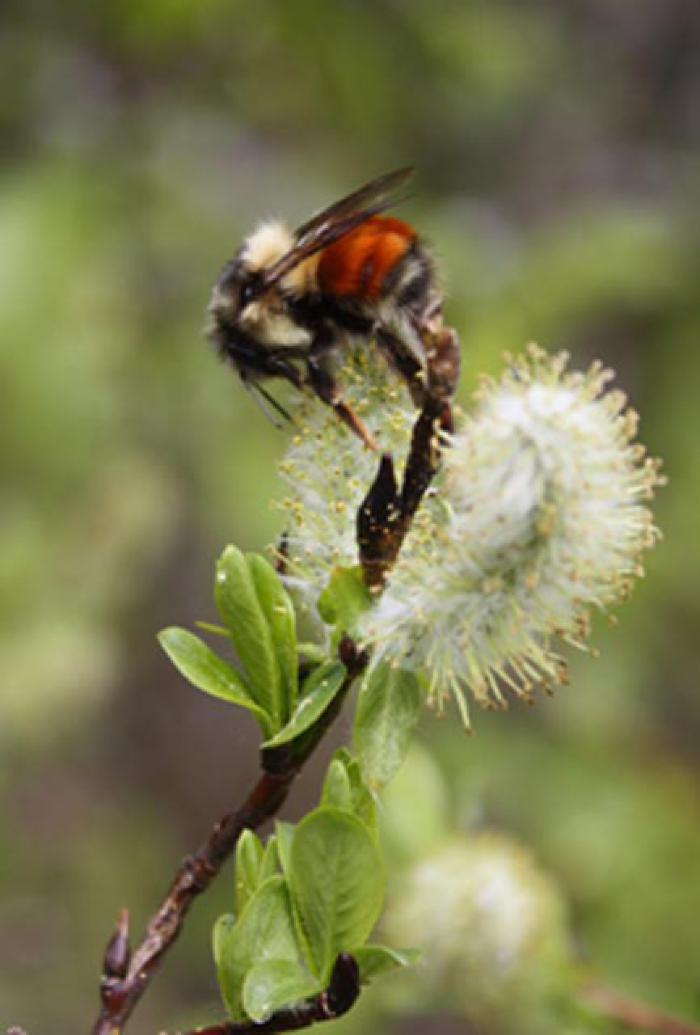Bumblebee — Uuqutiiq

Bumblebees play an important role in the ecology of Alaska’s terrestrial environments. The farther north you move, the fewer pollinators there are. In Alaska, bumblebees and hoverflies do much of the pollinating. Bumblebees have a furry, black-and yellow body and transparent wings. These social insects search flowers for nectar, which they drink with a long tongue. In the process, their hairy bodies become smeared with pollen, which they spread among other plants as they travel and feed.
A fear of bees pervades the Eskimo world, where dead bees were once used in amulets and shamans’ paraphernalia. An Alutiiq Elder reports that bumblebees are “bad, bad, bad.” This may be because bees drink the nectar of the monkshood plant. This plant is the source of aconite, the extremely potent nerve toxin once used to kill whales. The fact that bees can subsist from this deadly plant may make them dangerous. In the Aleutian chain, bumblebees were associated with weaponry and their legs were used in whaling poisons. Like a poisoned spear, the bumblebee deeply penetrates a flower where he remains to do his work. In the traditional language of the Aleutian Islands, the term for the monkshood plant translates literally as “the house of the bumblebee.”
